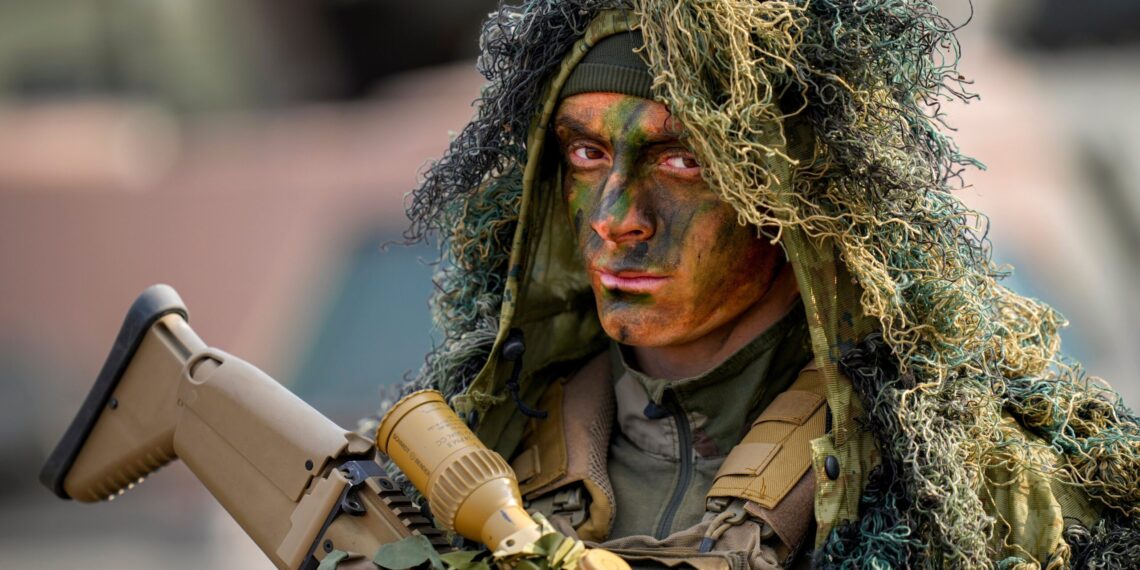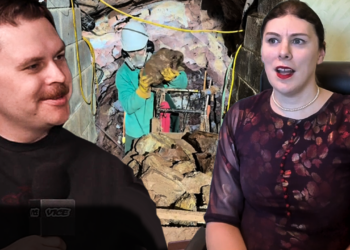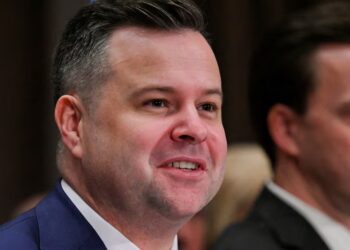BRUSSELS — European leaders have promised to unite and build up their militaries as never before, to take charge of their defenses and curb dependence on the United States. It’s a tricky task.
Some of their plans, like building a drone shield on Europe’s eastern borders or developing a next-generation French-German-Spanish fighter jet, are floundering before they take off.
BRUSSELS — European leaders have promised to unite and build up their militaries as never before, to take charge of their defenses and curb dependence on the United States. It’s a tricky task.
Some of their plans, like building a drone shield on Europe’s eastern borders or developing a next-generation French-German-Spanish fighter jet, are floundering before they take off.
The 100-billion-euro ($116 billion) plan for a European fighter plane that could provide an alternative to the American F-35 is mired in industrial infighting, testing the promise of unity as companies jockey to profit from the manufacturing.
Meanwhile, the European Union’s proposal to build a “drone wall” near the border with Russia got little enthusiasm from some leaders, who thought the name was a clumsy description of the high-tech detection and defense capabilities that are needed.
The lukewarm response to the plan by the European Commission, the bloc’s executive arm, has called into question the E.U.’s much-hyped vow to step up and have a bigger say in military matters.
Officials point to a host of challenges as Europe aims to face up to a more militarized world: national governments have conflicting interests; defense industries are divided along national borders; and perceptions of threats vary from east to west.
While European members of NATO are accustomed to operating under United States’ leadership, outside the alliance’s umbrella there is also risk of a power struggle between national governments and the European Commission, which traditionally has not had a role in defense.
“In defense, we are very individual and for us to come together and to start to do something, it’s a challenge,” European Commissioner for Defense Andrius Kubilius said in an interview with The Washington Post. “It will not come very quickly, but we need to see that picture.”
A former Lithuanian prime minister, Kubilius is the first defense and space commissioner since the E.U. was founded in 1993 to promote free trade. The bloc, which has long described itself as a “peace project,” is now looking to grow Europe’s arms industry and boost public support for military spending.
Kubilius said he was clear-eyed about the obstacles to refitting for a new role. Manufacturing of equipment is “totally fragmented,” countries are used to “working by themselves” and the E.U. has had “very limited to no influence,” he said. “You cannot just write a decree that tomorrow everybody should go together.”
One example is that European nations sent Ukraine at least 11 different types of howitzers after Russia’s invasion in 2022. Technically, according to its treaties, the E.U. cannot spend money from its budget directly on weapons. However, it is increasingly finding indirect ways to facilitate such purchases.
The constraints are also embodied in the commissioner’s job, which makes him a sort of defense minister with no army.
“But I have industry,” Kubilius responded.
He is now charged with convincing weapons companies to limit duplication, and with promoting ways the E.U. can arrange financing to encourage capitals to buy and develop systems together.
The mission, however, is being hobbled as the two biggest economies — Germany and France — stagnate, and by the bureaucratic nature of the E.U., which binds together 27 nations with priorities that often compete as much as they coincide.
That friction came to the fore as the E.U. identified “flagship projects” to develop military assets it says are needed or are now provided by the U.S., including anti-drone systems and integrated air defenses.
European leaders are calling for better means to fight drones after numerous mysterious incursions into the airspace of several countries — including in recent days in Belgium. Despite the E.U. billing it as a top priority, however, the “drone wall” idea almost immediately ran into a wall of its own.
Some leaders questioned how it would be funded or whether it would clash with NATO plans. Some Mediterranean nations said it was too centered on the eastern flank. Some even ridiculed the name. (The “wall” is more like a network of systems to fight drones).
The E.U. now calls it the European Drone Defense Initiative instead, and wants it ready by 2027. A defense policy road map, initially called “Rearm Europe,” was also rebranded to “Readiness 2030” after some countries viewed the original name as too militaristic.
What no one disagrees about is that Europe will have to protect itself.
Since President Donald Trump’s return to office, European leaders have faced criticism and cringing from their constituents for kowtowing to the White House, including on tariffs and support for Ukraine. European diplomats insist they are doing their best to manage relations with a partner that no longer acts like an ally but that they need — for now.
At the same time, European officials say that they are working to join forces to reduce, and perhaps one day even end, their reliance on Washington. The balancing act has gained urgency as Russia refuses to stop the war in Ukraine and an American military drawdown looms on the continent, where Washington has guaranteed European security for decades.
In the east, where alarm runs deeper, some governments aren’t waiting for their neighbors. Poland will start building its own anti-drone system within months, its deputy defense minister said this month.
The bloc’s biggest military powers, France and Germany, are reluctant to give the E.U. executive branch control over defense projects, while smaller nations such as Lithuania, Latvia and Estonia in the Baltics have more interest in a bigger role for the Commission, officials say.
Faced with Trump’s pressure on Europe to spend more and Russia’s war in Ukraine, European capitals are now pushing to close ranks, sign defense agreements and dig together for cash to bolster their arsenals and to arm Ukraine.
But while money is pouring into defense, there is no single plan yet on how to spend it, José Vicente de los Mozos, chief executive of Spanish military contractor Indra, recently told reporters in Brussels.
“I think there needs to be a balance between the European Union’s vision and country requirements,” he said. “We believe in the consolidation in the European defense industry, but each country wants to keep their sovereignty.”
European leaders are often criticized for not preparing sooner for U.S. disengagement. Presidents long before Trump also warned, though perhaps in less stark terms, that priorities could shift — especially to Asia from Europe.
Washington, however, also bears responsibility for Europe’s limited capabilities, having long insisted on American dominance over NATO’s military operations, especially command and control, and opposing as “redundant” expenditures to give Europe more independence.
Now, as policymakers question whether Europe should still rely on U.S. weapons or spend its money on U.S. industry, calls are growing to overcome disputes and build broader pan-European systems.
One of those is a proposed future combat air system (FCAS) that combines a fighter jet with automated drones. The plan, meant to represent the pinnacle of European defense autonomy, instead is becoming a symbol of the obstacles to cooperation.
The idea, announced in 2017, is to develop a jet by 2040 that could replace France’s Rafale and the Eurofighter Typhoon flown by Germany and Spain. Progress, however, has stalled amid a growing public rift between the aerospace rivals, Dassault in France and Germany’s industry partner Airbus, over who’s in charge and how to divide production.
They are due to move to the next phase, making and flying a prototype, but the feud is stirring doubt about whether the jet will materialize. The project is also creating friction between Paris and Berlin, which have set a deadline to settle the dispute by the end of the year.
Camille Grand, secretary general of the European Aerospace, Security and Defense Industries Association, said Europe’s big arms makers already have joint ventures and forms of integration, such as in producing missiles.
“What prevents this from going further is their different DNAs remain,” though “there is lots of money” for the industry today, he said. “The question is what incentivizes them to do it together rather than on a national basis?”
Alongside U.S. weapons, Europe also relies heavily on U.S. command and control. American officers have long held the top uniformed command posts at NATO.
Developing European command capabilities independent of the U.S. will not be easy. To start, there’s no prospect of a European army any time soon. And the lack of a joint force raises complicated questions about asking soldiers to fight — and potentially die — under a commander wearing a different country’s flag.
The U.S. pullback has revived a push for strengthening Europe’s role at NATO, a message now also adopted by the Trump administration, but it’s unclear how that will work.
“Will the Europeans be able to fight with less America? I think it’s already happening,” said Grand, who is also a former NATO official. “Then, there is the very political issue of trusting each other … We are in a transformation. What does that mean for how you organize your forces? How you equip them?”
With most E.U. nations also members of NATO, the European Commission is keen not only to avoid stepping on the toes of national leaders, but also to avoid overstepping on NATO’s remit.
“There are large gaps between aspiration and reality,” German central bank chief Joachim Nagel said of Europe’s defense plans at a recent event in Berlin. “It remains to be seen,” Nagel said, “whether European states are prepared to relinquish competencies in such a sensitive area as defense in order to achieve more together.”
Kate Brady in Berlin contributed to this report.
The post Trump wants Europe to defend itself but that’s proving tough to do
appeared first on Washington Post.




